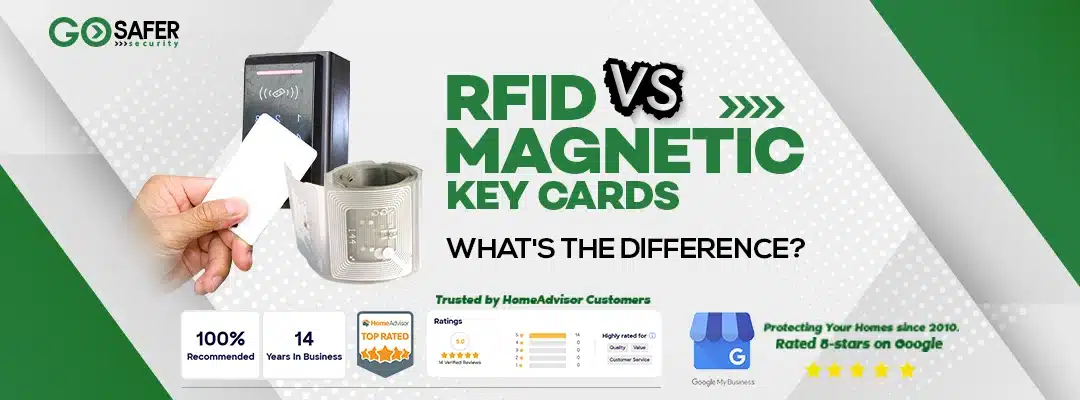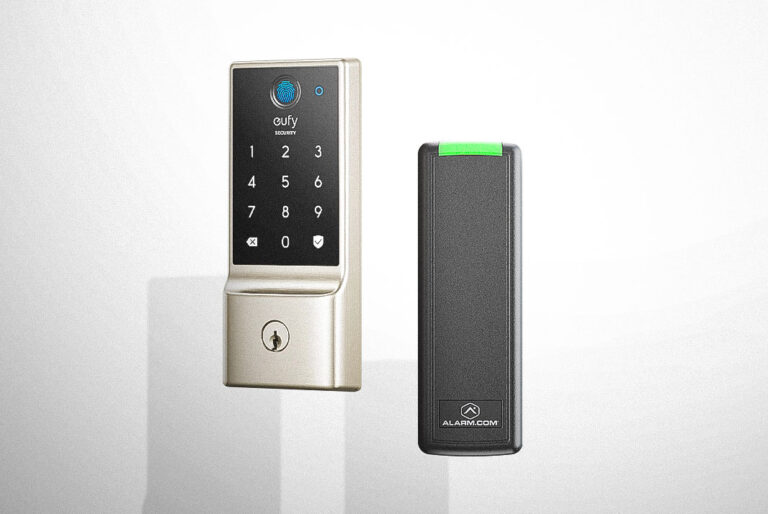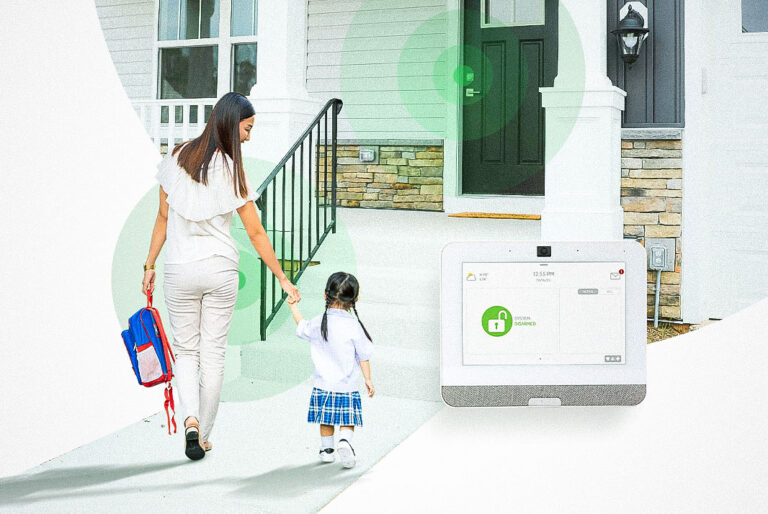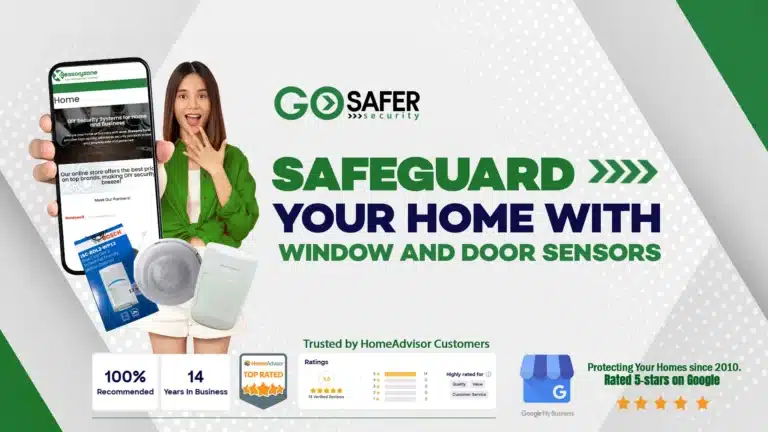Are you tired of carrying around bulky keys or swiping a flimsy card to access your workplace? Have you considered upgrading to a more modern and efficient method? RFID and magnetic key cards are two popular options for entry and access control systems. But which is better?
In this article, we’ll break down the key differences between RFID and magnetic key cards, and help you make an informed decision on which system is best suited to your needs.
Read on to discover the benefits, pros and cons, and cost comparison of RFID vs magnetic key cards, and why upgrading your access control system could save you time and money in the long run.
To learn more on how to maintain security with controlled system, visit our blog post here.
Table of Contents
ToggleOverview of RFID and Magnetic Key Cards
RFID is a technology that uses radio waves to identify and track objects. RFID tags, small electronic devices that store data, are attached to the items being tracked. These tags can be read by RFID readers, which are devices that emit radio signals and interpret the information stored on the tags. RFID technology has numerous applications, including access control, inventory management, and asset tracking.
Magnetic key cards, on the other hand, are plastic cards embedded with a magnetic stripe. This stripe contains data that is read by a magnetic card reader when the card is swiped. Magnetic key cards are widely used for access control in hotels, offices, and other secure locations.
Both RFID and magnetic key cards offer unique advantages and limitations, which we will discuss in detail in the following sections.
How RFID Works in Access Control
In an RFID access control system, each authorized user is issued an RFID tag, typically in the form of a card or key fob. The RFID tag contains a unique identifier, which is linked to the user’s information in a database. When the user approaches a door or entry point, they present their RFID tag to the RFID reader. The reader emits radio waves, which are intercepted by the tag’s antenna. The tag then sends its unique identifier back to the reader using radio waves.
The RFID reader verifies the identifier against the database and determines whether the user has permission to access the area. If the user is authorized, the door unlocks, allowing entry. If not, access is denied. This process occurs almost instantaneously, providing a seamless and efficient access control experience for the user.
How Magnetic Key Cards Work in Access Control
In a magnetic key card access control system, users are issued plastic cards with a magnetic stripe. This stripe contains a unique identifier, which is encoded onto the stripe using magnetic particles. When the user swipes their card through a magnetic card reader, the reader decodes the identifier and checks it against a database of authorized users.
If the user’s identifier is found in the database, access is granted, and the door unlocks. If not, access is denied. Magnetic key card systems are relatively simple and inexpensive, making them a popular choice for many organizations.
Technical Differences between RFID and Magnetic Key Cards
There are several key technical differences between RFID and magnetic key cards:
- Data storage and retrieval: RFID tags store data electronically, while magnetic key cards use magnetic particles to encode data on a stripe. This means that RFID tags can store more data and are less prone to wear and tear than magnetic key cards.
- Communication method: RFID systems use radio waves to transmit data between tags and readers, whereas magnetic key card systems rely on physical contact between the card and reader.
- Power source: RFID tags are passive devices, meaning they do not require a power source of their own. Instead, they draw power from the radio waves emitted by the RFID reader. Magnetic key cards, on the other hand, do not require power to store data, but the card reader must be powered to read the information on the card.
Advantages of RFID in Access Control Systems
RFID technology offers several benefits for access control systems:
- Increased convenience: RFID tags can be read from a distance, meaning users do not have to physically touch their card to the reader. This makes it easier and faster to gain access to secure areas.
- Enhanced security: RFID systems can use encryption and authentication protocols to protect data transmission between the tag and reader, making it more difficult for unauthorized users to gain access.
- Greater versatility: RFID tags can store more data than magnetic key cards, allowing for additional functionality such as tracking user movements or storing user preferences.
- Durability: RFID tags are more resistant to wear and tear than magnetic key cards, as they do not require physical contact with a reader.
Advantages of Magnetic Key Cards in Access Control Systems
Despite the benefits of RFID technology, magnetic key cards still offer some advantages for access control:
- Lower cost: Magnetic key card systems are generally less expensive than RFID systems, both in terms of the cards themselves and the reader equipment.
- Ease of use: Magnetic key card systems are simple and straightforward, with users only needing to swipe their card through a reader to gain access.
- Compatibility: Magnetic key card systems are widely used and well-established, meaning they are compatible with many existing access control systems.
Limitations of RFID in Access Control
RFID technology is not without its drawbacks, which include:
- Cost: RFID systems can be more expensive than magnetic key card systems, particularly for smaller organizations with limited budgets.
- Interference: Radio frequencies used by RFID systems can be susceptible to interference from other electronic devices, which may cause issues with access control performance.
- Privacy concerns: Because RFID tags can be read from a distance, there is a potential for unauthorized tracking of users’ movements, leading to privacy concerns.
Limitations of Magnetic Key Cards in Access Control
Magnetic key cards also have limitations in access control systems:
- Wear and tear: The magnetic stripe on the key card can wear out over time, leading to failed access attempts or the need for replacement cards.
- Limited data storage: Magnetic key cards can store less data than RFID tags, which may limit their functionality in access control systems.
- Security risks: Magnetic key cards are more susceptible to unauthorized access, as the data on the card can be more easily cloned or copied.
Security Differences between RFID and Magnetic Key Cards
In terms of security, RFID systems generally offer a higher level of protection than magnetic key card systems. RFID tags can use advanced encryption and authentication methods to protect data transmission, making it more difficult for unauthorized users to gain access. Additionally, RFID tags are more resistant to cloning or copying, further enhancing security.
However, RFID systems may raise privacy concerns due to the potential for unauthorized tracking of users’ movements. Magnetic key card systems, while more susceptible to unauthorized access, do not carry the same level of privacy concerns.
Cost Comparison: RFID vs Magnetic Key Cards for Access Control
The cost of an access control system depends on the specific requirements of your organization. In general, RFID systems tend to be more expensive than magnetic key card systems, both in terms of the cards themselves and the reader equipment. However, RFID systems may offer additional functionality and enhanced security, which can offset the higher initial cost.
When considering the cost of an access control system, it is essential to factor in the long-term maintenance and replacement costs associated with each technology. RFID tags are typically more durable and longer-lasting than magnetic key cards, which may result in lower long-term costs.
Choosing the Right Access Control System for Your Needs
When deciding between RFID and magnetic key card systems, consider the specific needs and priorities of your organization. If security, convenience, and versatility are top priorities, an RFID system may be the best choice. However, if cost and simplicity are more critical factors, a magnetic key card system may be a better fit.
It is also essential to consider the compatibility of the chosen access control system with your existing infrastructure and any future expansion plans.
Future Trends in Access Control: RFID and Magnetic Key Cards
As technology continues to advance, we can expect to see new developments in access control systems. RFID technology is likely to become more affordable and widespread, making it a more accessible option for organizations of all sizes. Additionally, RFID tags may become even smaller and more versatile, allowing for further integration into everyday objects and devices.
Magnetic key card systems, while still widely used, may become less popular as RFID technology becomes more prevalent. However, magnetic key cards will likely continue to have a place in certain applications where cost and simplicity are the primary concerns.
Conclusion
We can see that RFID and magnetic key cards have distinct differences in their technology, usage, and security features. While RFID technology offers features like enhanced security and fast processing, magnetic key cards have been widely adopted by businesses for years and offer cost-effective solutions.
When it comes to deciding which technology to use, it ultimately depends on your specific needs and budget. If you are looking for high-security measures, then RFID technology is your best bet. However, if you need to maintain a balance between cost and functionality, magnetic key cards may be the better choice.
At Go Safer Security, we provide top-notch security solutions using the latest technologies such as RFID and magnetic key cards. We are proud to have positive reviews from HomeAdvisor and rated 5 stars on Google. So, if you need reliable, affordable, and secure video surveillance and access control systems, you can trust Go Safer Security.
Don’t wait until it’s too late to secure your business or home. Contact us today and let our team of experts help you choose the right security solution for your needs. Protect your property, assets, and loved ones with Go Safer Security.







